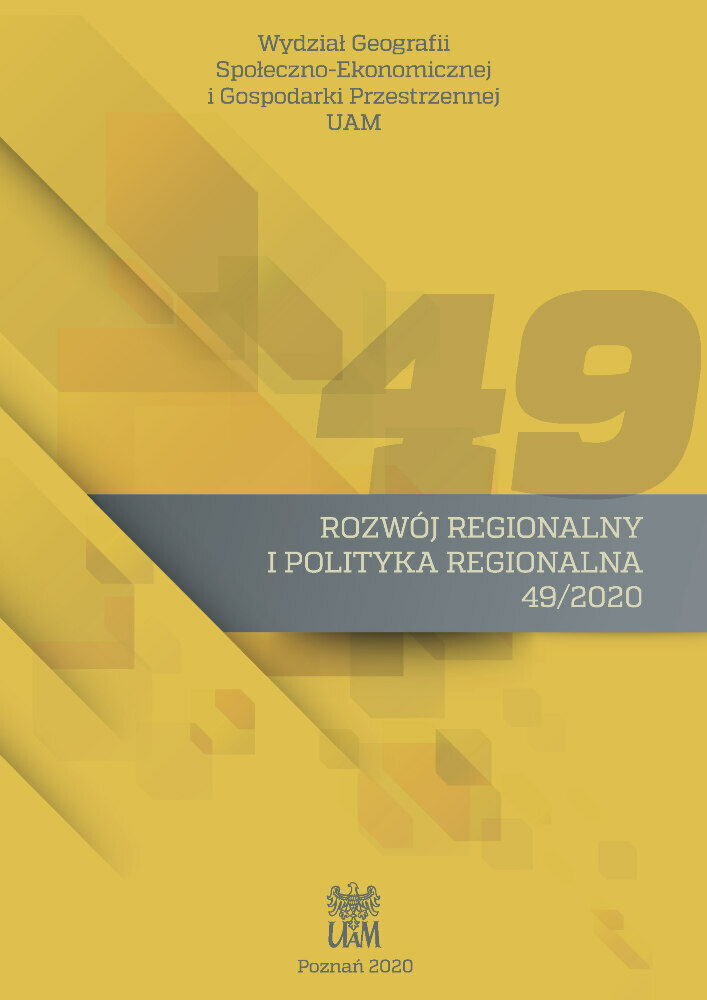Abstract
The concept of the Kuznets environmental curve (EKC) refers the relationship between economic development (most often expressed as GDP per capita) and environmental degradation. The graphic presentation of the classic EKC is similar to the inverted letter “U”. The shape of the curve is influenced by many factors, which causes widespread criticism of assumptions and attempts to use various models to verify dependencies. The article reviews and analyzes contemporary research in the scope of verification of the EKC concept. The theoretical premises and methodological approach were discussed. In addition, the explained variables (state of the environment) and explanatory variables, test sample size, time range and test results were compared obtained by researchers verifying the EKC concept. Particular attention was paid to the possibilities of using EKC for research at regional and local level.
References
Al-Mulali U., Ozturk I. 2016. The investigation of environmental Kuznets curve hypothesis in the advanced economies: the role of energy prices. Renewable and Sustainable Energy Reviews, 54: 1622–1631.
Antczak E. 2014. Estymacja przestrzenno-czasowej środowiskowej krzywej Kuznetsa za pomocą re¬gresji ważonej geograficznie. Collegium of Economic Analysis Annals, (34): 11–25.
Chowdhury R.R., Moran E.F. 2012. Turning the curve: A critical review of Kuznets approaches. Ap¬plied Geography, 32(1): 3–11.
Ciriaci D., Palma D. 2010. Geography, environmental efficiency and Italian economic growth: a spa¬tially-adapted Environmental Kuznets Curve.
Cole M.A., Rayner A.J., Bates J.M. 1997. The environmental Kuznets curve: an empirical analysis. Environment and Development Economics, 2(4): 401–416.
Daly H.E. 2005. Economics in a full world. Scientific American, 293(3): 100–107.
Dinda S. 2004. Environmental Kuznets curve hypothesis: a survey. Ecological Economics, 49(4): 431–455.
Emerson T.L., Pendleton L.H. 2004. Income, environmental disamenity, and toxic releases. Economic Inquiry, 42(1): 166–178.
Europejska Agencja Środowiska 2012. Kluczowe problemy środowiskowe, z którymi musi zmierzyć się Europa (2012). Sygnały 2012 EEA, Kopenhaga.
Gómez-Baggethun E., De Groot R., Lomas P.L., Montes C. (2010). The history of ecosystem services in economic theory and practice: from early notions to markets and payment schemes. Ecological Economics, 69(6): 1209–1218.
Grossman G.M., Krueger A.B. 1995. Economic growth and the environment. The Quarterly Journal of Economics, 110(2): 353–377.
Gruszecki L., Jóźwik B. 2019. Teoretyczne rekonstrukcje środowiskowej krzywej Kuznetsa. Gospodar¬ka Narodowa, 299(3): 95–117.
Islam N., Vincent J., Panayotou T. 1999. Unveiling the income-environment relationship: An explo¬ration into the determinants of environmental quality. Harvard Inst. for Internat. Development.
Jankowska E. 2016. Środowiskowa krzywa Kuznetsa w dekarbonizacji europejskich gospodarek. Studia Ekonomiczne, 289: 51–61.
Jean-Paul F., Martine D. 2019. Poza PKB. Mierzmy to, co ma znaczenie dla rozwoju społeczno-gospo¬darczego. OECD Publishing.
Kahuthu A. 2006. Economic growth and environmental degradation in a global context. Environ¬ment, Development and Sustainability, 8(1): 55–68.
Kassenberg A. 2011. Globalne problemy ekologiczne i ich konsekwencje dla rozwoju gospodarczego. Biuletyn PTE, (2): 52.
Kukla-Gryz A. 2004. Weryfikacja hipotezy o „środowiskowej krzywej Kuznetsa” na przykładzie emisji dwutlenku węgla w krajach OECD. Ekonomia/Uniwersytet Warszawski, (13): 113–135.
Lieb C.M. 2004. The environmental Kuznets curve and flow versus stock pollution: the neglect of future damages. Environmental and Resource Economics, 29(4): 483–506.
Meers R. 2000. A test of the environmental Kuznets curve for local and global pollutants.
Nowak-Far A. 2014. Krzywa Kuznetsa a wielość jurysdykcji fiskalnych. Studia z Polityki Publicznej, 1(1): 57–79.
Pablo-Romero M.P., Cruz L., Barata E. 2017. Testing the transport energy-environmental Kuznets curve hypothesis in the EU27 countries. Energy Economics, 62: 257–269.
Pakulska J. 2002. Środowisko przyrodnicze w rozwoju gospodarczym. Prace i Materiały Instytutu Rozwoju Gospodarczego SGH, 72: 295–308.
Panayotou T. 2016. Economic growth and the environment. The Environment in Anthropology, 140–148.
Park S., Lee Y. 2011. Regional model of EKC for air pollution: Evidence from the Republic of Korea. Energy Policy, 39(10): 5840–5849.
Pasten R., Figueroa E. 2012. The environmental Kuznets curve: a survey of the theoretical literature. International Review of Environmental and Resource Economics, 6(3): 195–224.
Perrings C. 2003. The economics of abrupt climate change. Philosophical Transactions of the Roy¬al Society of London. Series A: Mathematical, Physical and Engineering Sciences, 361(1810): 2043–2059.
Stern D.I. 2004. The rise and fall of the environmental Kuznets curve. World Development, 32(8): 1419–1439.
Stern D.I., Common M.S., Barbier E.B. 1996. Economic growth and environmental degradation: the environmental Kuznets curve and sustainable development. World Development, 24(7): 1151–1160.
UNEP. 2016. Global Environment Outlook (GEO-6) Assessment for the pan-European region. United Nations Environment Programme, ONZ.
Yandle B., Vijayaraghavan M., Bhattarai M. 2002. The environmental Kuznets curve. A Primer, PERC Research Study, 02–01.
Williamson C. 2017. Emission, education, and politics: an empirical study of the carbon dioxide and methane environmental Kuznets curve. The Park Place Economist, 25(1), 9.
License
Copyright
© 2020 WGSEiGP, Uniwersytet im. Adama Mickiewicza w Poznaniu
OPEN ACCESS
